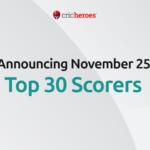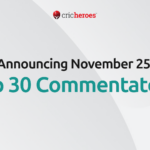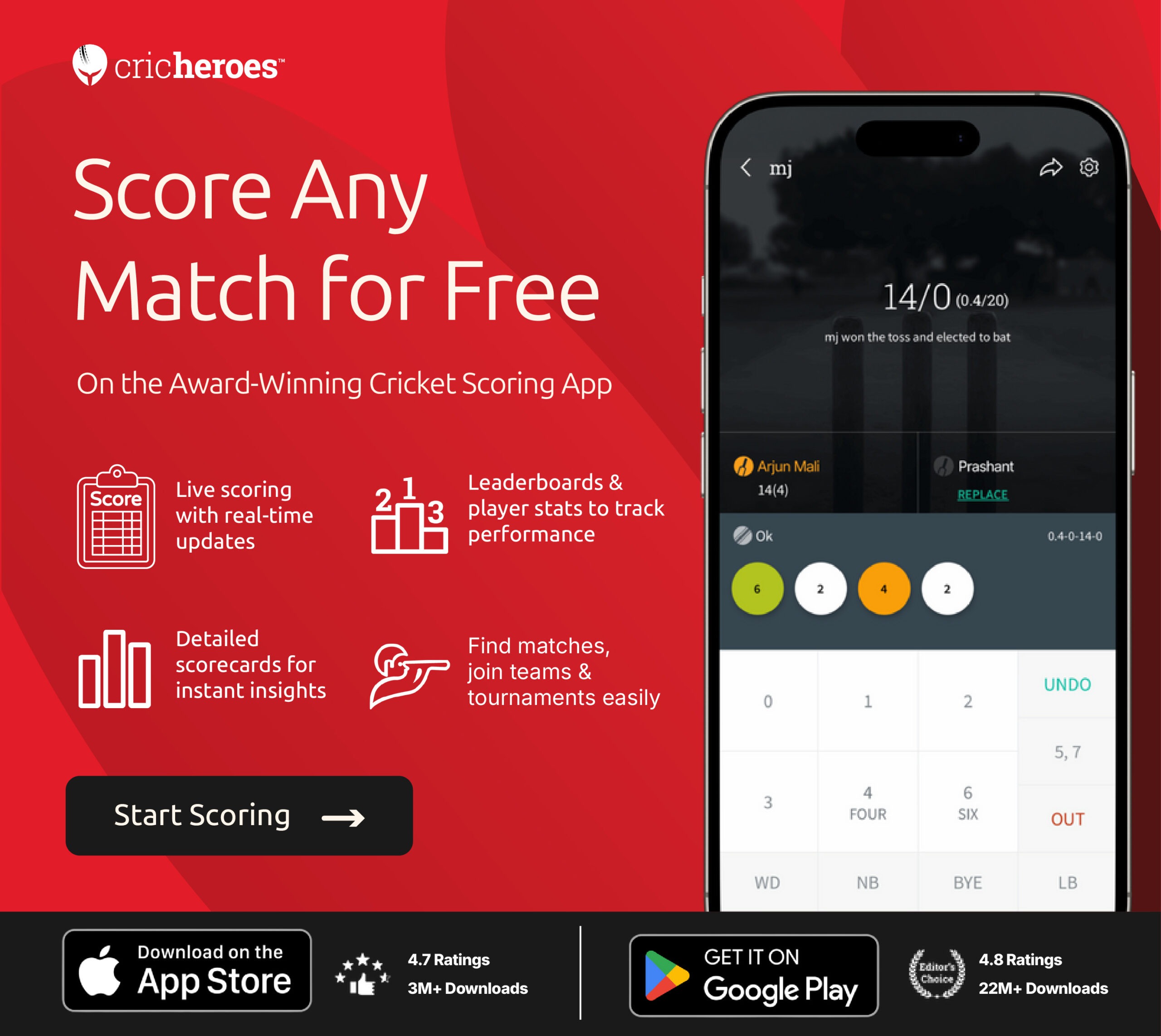Walking into a sports store or browsing online for cricket gear can be confusing, especially when you’re not sure what each item does or what fits your skill level. Many players — from beginners to aspiring professionals — end up buying equipment that doesn’t suit their needs, either wasting money or risking injury.
If you’ve ever been unsure about which cricket bat to pick or whether those bulky pads are even necessary, you’re not alone. This cricket equipment guide is designed for casual players, club cricketers, parents of junior athletes, and beginners who want clarity.
By the end of this article, you’ll have a clear understanding of the full cricket equipment list, how to make smart buying decisions, and the confidence to build your kit like a pro.
Know Your Level and Playing Style
Before buying any gear, figure out your current level of play. Are you just joining a school or local team? Are you playing weekend matches with friends? Or are you entering competitive club-level cricket?
Your answers matter because not all gear suits all types of players. Beginners often need lighter, more forgiving equipment. Competitive players may need more durable and high-performing options.
Ask yourself:
- How often do you play?
- What surface do you usually play on (grass, turf, cement)?
- Are you mainly batting, bowling, or doing both?
Once you know your playing style, you’ll make smarter choices when selecting bats, protective gear, and even shoes.
Cricket Q&A
Five quick questions. Get a personal tip.
The Cricket Equipment List: What You Really Need
Here’s a clear and simple cricket equipment list that every beginner should consider. This isn’t just about what looks good—it’s about what keeps you safe, comfortable, and game-ready.
Cricket Bat
- Choose between English Willow (higher quality) or Kashmir Willow (budget-friendly).
- Check the weight and balance; a bat that feels too heavy will affect your swing.
- For beginners, a light-to-medium-weight bat helps with control and reduces fatigue.
Cricket Ball
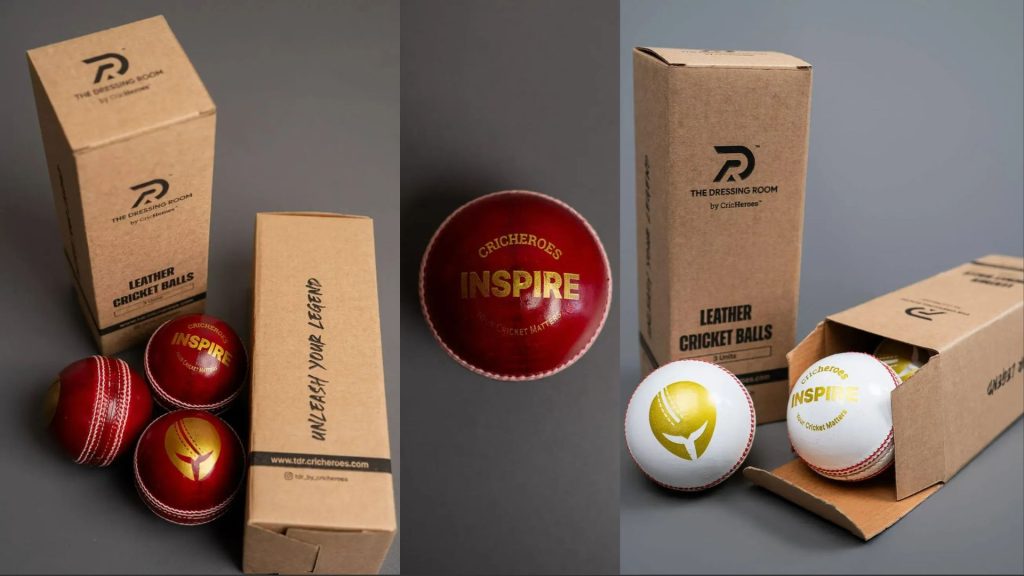
- Cricket Leather balls are used in official matches and offer proper bounce and seam.
- Tennis balls or soft training balls are ideal for early practice and casual play.
Batting Gloves
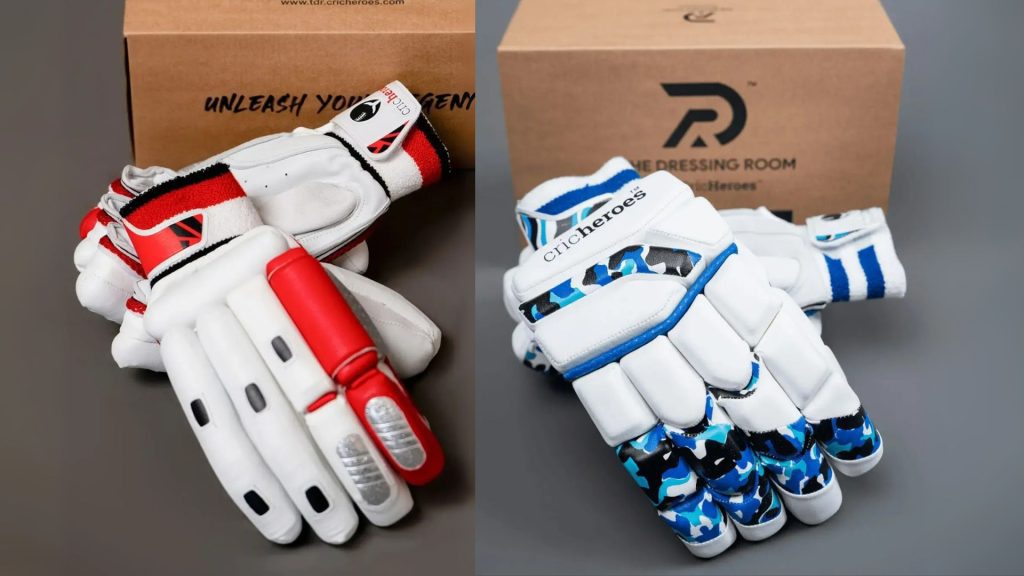
- Good gloves protect your fingers from shock and impact.
- Look for ones with thick padding and good grip. Sweat control is a bonus.
Shoes
- Spiked shoes offer better grip on turf pitches.
- Rubber-soled shoes work well for hard surfaces like cement.
This is your full cricket equipment foundation. Choosing the right items early will help you play with confidence and avoid injuries.
How to Choose a Cricket Bat That Suits You
Choosing the right bat is one of the most important parts of your cricket equipment setup. The wrong bat can hurt your timing, reduce control, and even cause injuries.
1. Wood Type
- English Willow: Softer, better performance, used by pros.
- Kashmir Willow: Harder, more durable, better for beginners.
2. Bat Weight
- Heavier bats offer more power but reduce speed.
- Beginners should go for light or medium-weight bats for better control.
3. Size and Fit
- Bat size should match your height.
- Use a bat size chart to choose the right length and blade width.
4. Handle and Grip
- Oval handles offer better directional control.
- Round handles feel more flexible and are easier for younger players.
- If you want more comfort or control, add a bat grip — available in the Cricket equipment section at CricHeroes Store.
Optional: Bat Size Chart
Here’s a quick size guide to help you choose the right bat based on your height:
| Player Height | Recommended Bat Size |
| Under 4’3″ (130 cm) | Size 0 |
| 4’3″ – 4’6″ (137 cm) | Size 1 |
| 4’6″ – 4’9″ (145 cm) | Size 2 |
| 4’9″ – 5’0″ (152 cm) | Size 3 |
| 5’0″ – 5’3″ (160 cm) | Size 4 |
| 5’3″ – 5’5″ (165 cm) | Size 5 |
| 5’5″ – 5’7″ (170 cm) | Size 6 |
| 5’7″ – 5’9″ (175 cm) | Harrow |
| 5’9″ and above | Full Size (Short Handle) |
For more details: Cricketers Bat Weight: Guide to Finding the Perfect Balance
Always test the bat in-hand before buying, and choose one that feels balanced—not just what others are using.
Protective Gear: Don’t Compromise on Safety
Protective gear keeps you safe from fast balls, awkward bounces, and painful finger hits. Every player needs to wear proper safety gear, especially when batting or fielding close to the batter.
1. Helmet
- Strong shell with face grille.
- Adjustable padding and proper ventilation.
- Should meet cricket safety standards.
2. Batting Gloves
- Look for padding on fingers and palm.
- Non-slip grip is important for bat control.
- Gloves should offer flexibility and comfort during long innings.
3. Pads and Guards
- Lightweight pads that don’t restrict running.
- Thigh guards and arm guards for added protection.
- Always include an abdominal guard — it’s small but essential.
4. Additional Comfort Gear
- Wristbands: Control sweat and support wrist movement.
- Sleeves: Reduce fatigue and protect skin from the sun.
- High-quality protective items are also available through the CricHeroes Store.
Shoes and Apparel: Get the Basics Right
Comfortable, durable shoes and well-fitting clothing are crucial, especially for long matches or practice sessions.
1. Cricket Shoes
- Spiked Shoes: Best for turf pitches; offer excellent grip.
- Rubber Soled Shoes: Ideal for cement or matting wickets.
Key features to look for:
- Ankle support to prevent injuries.
- Breathable material for heat control.
- A snug fit that doesn’t cause blisters.
2. Apparel
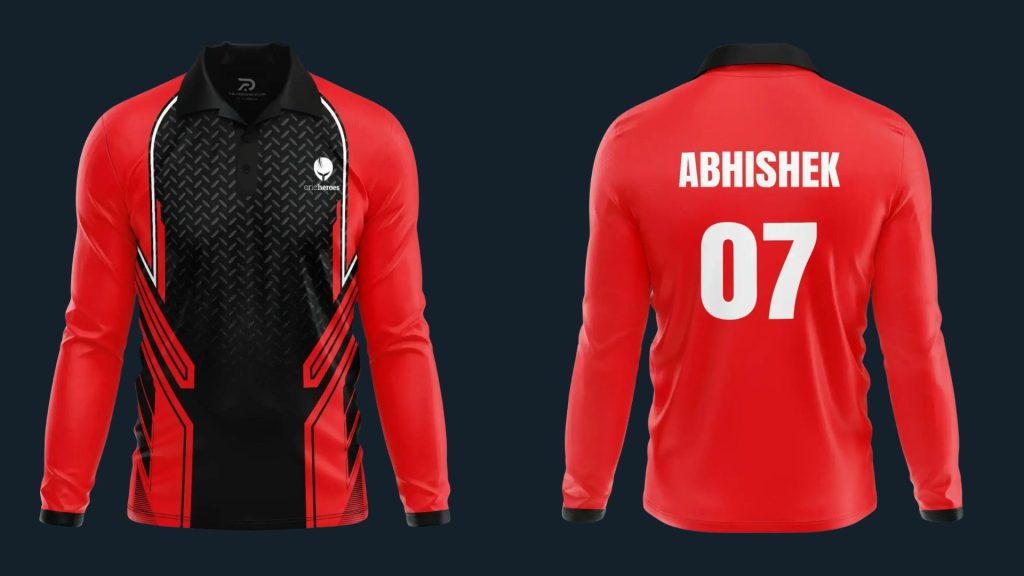
- Choose track pants and jerseys made from breathable, stretchable material.
- Well-fitting clothing improves movement and helps regulate body temperature.
- Personalized cricket jerseys are ideal for club and team players.
3. Small but Important Accessories
- Cap: Blocks sun and improves focus.
- Socks: Cushioned soles reduce fatigue.
- Sipper bottles: Keep you hydrated between overs.
- Toss coins and shorts: Useful additions for game prep.
You can find all these items under cricket accessories at CricHeroes Store, made with players’ comfort in mind.
Once your main cricket gear is sorted, you’ll need a reliable way to carry and organize it. That’s where a proper kit bag comes in. It keeps your equipment safe, accessible, and ready for action—whether you’re heading to practice or match day. But a kit bag isn’t just for your bat and pads. There are a few often-forgotten items that can make a big difference on the field.
What to Pack in Your Cricket Kit Bag
Your gear is only part of the game. How you pack and manage it matters too. Here’s what most beginners overlook but definitely need in their kit bag.
Cricket Kit Bag Essentials:
- Extra bat grip in case the original wears out
- Replacement shoe spikes for turf play
- Small towel or sweat cloth to stay dry during matches
- Socks (a fresh pair can prevent blisters mid-game)
- Grip tape or sports tape for quick equipment fixes
- A zip pouch for keeping items like coins, IDs, and keys safe
- Energy bar or hydration mix to stay fueled in long innings
Packing right not only prepares you better but keeps you focused on your game, not what’s missing.
Maintenance Tips to Extend the Life of Your Gear
Good cricket equipment can last a long time—if you take care of it properly. Poor maintenance leads to broken bats, worn-out gloves, and unsafe gear.
1. Bat Maintenance
- Knock-in your English Willow bat before using a mallet or soft cricket ball.
- Apply linseed oil lightly to prevent drying and cracking.
- Avoid using your match bat during net sessions with old or hard balls.
2. Glove and Pad Care
- Wipe with a dry or slightly damp cloth after use.
- Let them air out—never store them while damp, as it causes odor and wear.
- Avoid direct sun drying, which can damage padding and stitching.
3. Ball Storage
- Keep leather balls in a dry, cool place.
- Use a cloth bag or box to retain shape and avoid moisture exposure.
4. Shoe Upkeep
- Clean out dirt and grass after every match.
- Let them dry naturally; avoid machine washing or heat drying.
- Check for worn spikes or sole wear regularly.
Taking small steps after each match can make your gear last significantly longer.
Where to Buy Cricket Equipment
Getting the right gear also depends on buying from the right place. Beginners often struggle to find equipment that balances quality and price.
1. Local Cricket Stores
- Try out bats, gloves, and helmets physically.
- Good for understanding size and feel.
- Great for last-minute purchases or fittings.
2. Trusted Online Platforms
- Wider selection of brands and sizes.
- Often more affordable with deals and bundles.
One reliable option for beginner and intermediate players is CricHeroes Store, which offers practical, game-ready gear including batting gloves, leather balls, personalized cricket jerseys, sleeves, and more—built specifically for real match conditions.
Final Checklist Before You Buy
Before you make any final purchase, run through this quick checklist. It will save you time, money, and frustration.
- Does the bat feel balanced in your hand?
- Is the gear lightweight yet protective?
- Do the shoes fit well and suit your playing surface?
- Have you set a budget and compared brands?
- Have you considered maintenance and longevity?
If you can check off all five, you’re on track to build a proper cricket kit that will serve you well.
When and How to Upgrade Your Cricket Gear
Once you gain confidence and play more regularly, it’s a good idea to start upgrading your equipment. The right time to level up is when your current gear is limiting your growth.
Upgrade Tips:
- After 6 months of play, switch from a Kashmir to an English Willow bat for better stroke feedback.
- Move from soft training balls to leather balls to build match skills.
- If your gloves or pads feel worn, replace them even before they tear—comfort and safety matter.
- Try adding accessories like a bat grip or sleeves for extra performance and comfort.
Building your kit gradually ensures each item serves your actual needs—not just your wishlist.
Personal Care and First Aid: Don’t Overlook It
Playing cricket in the sun for hours can take a toll on your body. Every cricketer, especially beginners, should include a few personal care and first aid essentials in their kit.
Must-Haves for Personal Care and Safety:
- Zinc sunscreen to protect your skin during day games
- Antiseptic cream or spray for treating minor cuts or turf burns
- Muscle pain relief spray or roll-on for cramps and strains
- Adhesive bandages (plasters) for blisters or bat handle burns
- Cold pack (instant or reusable) to manage swelling
- Hand sanitizer and tissue wipes for quick hygiene
- Spare towel for sweat control and cleanup
You don’t need a full first-aid kit, but these items can make the difference between finishing your game strong—or sitting out injured or uncomfortable.
Common Mistakes Beginners Should Avoid
Making a few wrong choices early on can hurt your performance and confidence. Learn from others’ experience—here are the most common mistakes new players make.
Avoid These Errors:
- Choosing a bat based on looks instead of feel and balance
- Skipping essential protective gear like thigh guards or guards
- Buying shoes that look good but don’t fit or grip well
- Using a high-grade bat for practice, which wears it out early
- Ignoring gear maintenance until something breaks
- Buying everything at once instead of prioritizing must-haves first
Smart players invest time in learning—not just playing.
Conclusion
Choosing the right cricket equipment doesn’t have to be confusing. Whether you’re new to the sport or looking to upgrade your kit, knowing what gear fits your level and how to maintain it can make a big difference. Start with the basics—bat, gloves, pads, and shoes—and build around your needs and budget.
Always prioritize fit, comfort, and safety over brand names or trends. Use this guide to make confident, informed decisions that help you play better and stay protected.
Ready to build your own kit? Make your choices count and invest in equipment that supports your game from day one.
FAQs
What equipment do you need for cricket as a beginner?
You’ll need a cricket bat, ball, helmet, batting gloves, pads, abdominal guard, and proper shoes. Add-ons like sleeves, wristbands, and a cap can improve comfort and performance.
What is a full cricket equipment list?
A full kit includes a bat, ball, gloves, helmet, pads, thigh guard, arm guard, abdominal guard, shoes, jersey, trousers, socks, cap, sunscreen, toss coin, and sipper bottle.
How do I choose the right cricket bat?
Choose based on your height, playing level, and strength. Beginners should opt for a lightweight bat with good balance. English Willow is ideal for serious play; Kashmir Willow is better for casual use.
Where should I buy cricket gear online?
Look for platforms that offer size guides, beginner-friendly products, and solid return policies. Stores like CricHeroes Store are tailored for players at all levels with functional and quality-tested gear.
How can I make my equipment last longer?
Regular cleaning, proper storage, and small maintenance habits like oiling your bat or drying your pads after use will greatly increase the life of your gear.

I am Manan Joshi , SEO All-Rounder at CricHeroes.
CricHeroes is the ultimate Cricket Scoring App and the world’s only true Cricket Network. With more than 4 crore+ registered cricketers using CricHeroes to Live Cricket Scores for their local cricket matches and tournaments, CricHeroes is already the #1 Cricket Scoring App Globally!
We also proudly present “CricHeroes Store” by CricHeroes, a dedicated shop for cricket apparel and accessories, helping players gear up for their game.












